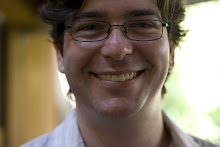Map Making
My last days on the road to
The memory is visceral; fogged windows, warm hearths, scent of wet soil, cold fingering its way between jacket and scarf. Images of warm fires, hearty food, wine, and friends, all cloaked in the blue-grey half light of early winter with the gentle hiss and trickle of Galician drizzle come to mind, even though that wasn’t necessarily the reality. In the tiny bars and restaurants of towns like Ferreiros, Airexe, or Melide, towns that one has no reason to visit otherwise, pilgrims talked to me of their journeys physical and emotional. As I had been throughout the walk I was struck by the lack of traditionally defined religious sentiment. But then for most, Christianity, Buddhism, or indeed any form of institutionalised religion was irrelevant. Rather, what presented as meaningful was the recognised power of sharing stories, the will to push on, the need to examine life. Again and again the title of a book by Jack Kornfield came to mind; A Path With Heart. And that, I believe, is what the Camino was for most I interviewed – an attempt, or more accurately a part of the project of, finding a meaningful path in life, love, and labour.
In October, early in my walk, I commented here about the experiential aspect of the pilgrimage – that one felt as if one were a ‘maintainer’, that in the process of following the path the pilgrim leaves one – but I realise now that for many pilgrims, at a very deep personal level, the process is also cartographic. For most pilgrims on the roads to
The pilgrimage to

2 comments:
Alex, this Santiago pilgrimage reminded me of Paulo Coelho's novel "The Pilgrimage: Road to Santiago" - have you read it?
http://www.paulocoelho.com.br/engl/
Hi Madame Meltje,
Yes I have read Coelho's book. I found people's reactions to his book along the way quite interesting. Sometimes a photo would be displayed in a bar to indicate he had eaten there, and pilgrims flocked around it. His book clearly touched on something for a great many people. I'm curious (and flattered) that you are reminded of it by this. Could you explain how?
Alex
Post a Comment